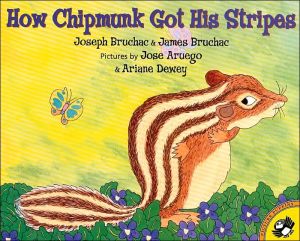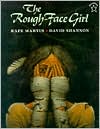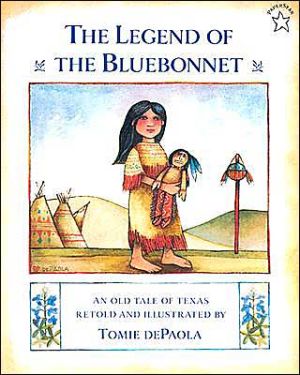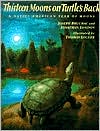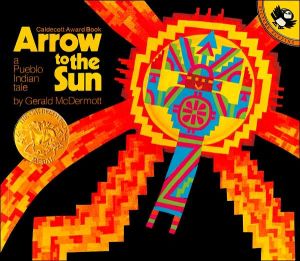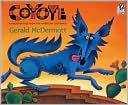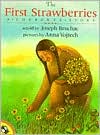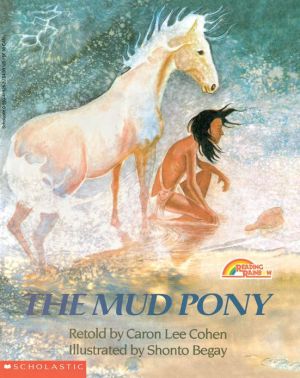How Chipmunk Got His Stripes
Bear brags that he can do anything-even stop the sun from rising. Brown Squirrel doesn't believe him, so the two wait all night to see if the sun will rise. Sure enough, the sky reddens and the sun appears. Brown Squirrel is so happy to be right that he teases Bear. What happens when a little brown squirrel teases a big black bear? Brown Squirrel gets stripes and is called chipmunk from that day forward . . . Joseph and James Bruchac join forces to create this buoyant picture book, based on a...
Search in google:
Bear brags that he can do anything-even stop the sun from rising. Brown Squirrel doesn't believe him, so the two wait all night to see if the sun will rise. Sure enough, the sky reddens and the sun appears. Brown Squirrel is so happy to be right that he teases Bear. What happens when a little brown squirrel teases a big black bear? Brown Squirrel gets stripes and is called chipmunk from that day forward . . . Joseph and James Bruchac join forces to create this buoyant picture book, based on a Native American folktale. Illustrated by Jose Aruego and Ariane Dewey.Publishers WeeklyIn Bruchac and his son's (When the Chenoo Howls) serviceable retelling of a Native American pourquoi tale, Brown Squirrel challenges prideful Bear to keep the sun from rising. When the sun does rise, and Brown Squirrel teases Bear, Bear threatens to eat Brown Squirrel, and his claw marks transform the fellow into Chipmunk. Though the prose occasionally falters (e.g., "Everyone was happy except for one animal. That animal was Bear" or the advice of Brown Squirrel's grandmother, "It is good to be right about something. But when someone else is wrong, it is not a good idea to tease him"), the dialogue is effective and invites audience participation--especially the repeated phrases with sound effects, as when the quarrelsome pair sit side by side all night chanting: "The sun will not come up, hummph!" and "The sun is going to rise, oooh!" Aruego and Dewey (Antarctica Antics) create lush landscapes, but Bear and Brown Squirrel are uncharacteristically bland, often featuring the same facial expressions repeatedly. Ages 5-8. (Mar.) Copyright 2001 Cahners Business Information.
\ Publishers Weekly\ - Publisher's Weekly\ In Bruchac and his son's (When the Chenoo Howls) serviceable retelling of a Native American pourquoi tale, Brown Squirrel challenges prideful Bear to keep the sun from rising. When the sun does rise, and Brown Squirrel teases Bear, Bear threatens to eat Brown Squirrel, and his claw marks transform the fellow into Chipmunk. Though the prose occasionally falters (e.g., "Everyone was happy except for one animal. That animal was Bear" or the advice of Brown Squirrel's grandmother, "It is good to be right about something. But when someone else is wrong, it is not a good idea to tease him"), the dialogue is effective and invites audience participation--especially the repeated phrases with sound effects, as when the quarrelsome pair sit side by side all night chanting: "The sun will not come up, hummph!" and "The sun is going to rise, oooh!" Aruego and Dewey (Antarctica Antics) create lush landscapes, but Bear and Brown Squirrel are uncharacteristically bland, often featuring the same facial expressions repeatedly. Ages 5-8. (Mar.) Copyright 2001 Cahners Business Information.\ \ \ \ \ Children's LiteratureBragging Bear is challenged by Brown Squirrel to stop the sun from rising. All the other animals watch Bear's humiliation as, despite his determination, the sun still rises. But Brown Squirrel forgets his grandmother's warning and taunts Bear. His cleverness saves him from being eaten, but the claw marks Bear leaves down his back turn him into Chipmunk. And ever since, Chipmunk is the first to happily greet dawn, while Bear is the last to rise, for it reminds him that "no one, not even Bear, can do everything." The tale flows as befits one told by master storytellers, complete with chants to encourage the audience to join in. Aruego and Dewy create animals and settings in double-page scenes with simplified characters and emotionally charged color backgrounds. Bulky Bear registers arrogance, then annoyance, with sharp teeth and slouching posture. Squirrel is cocky, then frightened. The stylized pen-and-ink and watercolor drawings are directly appealing. The authors note the source and the many versions of their tale. 2001, Dial Books for Young Readers/Penguin Putnam, $15.99. Ages 4 to 8. Reviewer: Ken Marantz and Sylvia Marantz\ \ \ School Library JournalK-Gr 3-Bear struts through the forest, bragging as he goes: "I am Bear. I am the biggest of all the animals. Yes, I am!-I can do anything. Yes, I can!" Little Brown Squirrel elects to challenge him: "Can you tell the sun not to rise tomorrow morning?" Bear accepts the challenge. As the sun sets, he issues his command and the two settle down to see what morning will bring. As the night progresses, the braggart continues to boast, and Squirrel cannot resist teasing. When the sun predictably rises in the morning, Bear is disgruntled and angry, and his taunter foolishly continues to tease. When Bear threatens to eat the little creature, Squirrel makes a desperate dash for his burrow. He is able to escape, but not before Bear has raked his back with his sharp claws. Although the scratches heal, they leave Squirrel with long, pale stripes on his back. He is now Chipmunk, the Striped One. In their introductory authors' notes, the Bruchacs indicate that the story is an amalgam of tales they have heard from Cherokee, Abenaki, and Mohawk sources, and has further been fleshed out through their own telling over the years. The result is polished, cohesive, and energetic. While the story begs to be told, Aruego and Dewey's vibrantly hued trademark watercolors add significantly to the humor. A priority purchase for most collections.-Grace Oliff, Ann Blanche Smith School, Hillsdale, NJ Copyright 2001 Cahners Business Information.\ \ \ \ \ Kirkus ReviewsNoted storyteller Bruchac (Squanto's Journey: The Story of the First Thanksgiving, p. 1498, etc.) teams up with his son, James (Native American Games and Stories, not reviewed) to present a pourquoi tale from the East Coast Native American tradition. Bear is undeniably big; he is also a braggart, given to walking through the forest and proclaiming his superiority to all within earshot:"I can do anything! Yes, I can!" When he hears this, little Brown Squirrel challenges Bear to tell the sun not to rise the next day. This Bear does, and when the sun does in fact rise despite his injunction not to, Brown Squirrel unwisely gloats:"Bear is foolish, the sun came up. Bear is silly, the sun came up." Thanks to trickery, Brown Squirrel escapes with his life, but not before Bear claws the stripes into his back that cause him to change his name to Chipmunk. The Bruchacs translate the orality of the tale to written text beautifully, including dialogue that invites audience participation. Aruego and Dewey's (Mouse in Love, p. 886, etc.) signature cartoon-like illustrations extend the humor of the text perfectly. One spread shows the faces of all the animals rejoicing in the yellow light of the newly risen sun—all except Bear, whose glower contrasts ominously with Brown Squirrel's glee. Clever use of perspective emphasizes the difference in size between boastful Bear and his pint-sized trickster opponent. Authors' notes precede the story, explaining the history of the tale and each teller's relationship to it. A winner. (Picture book/folktale. 4-8)\ \
